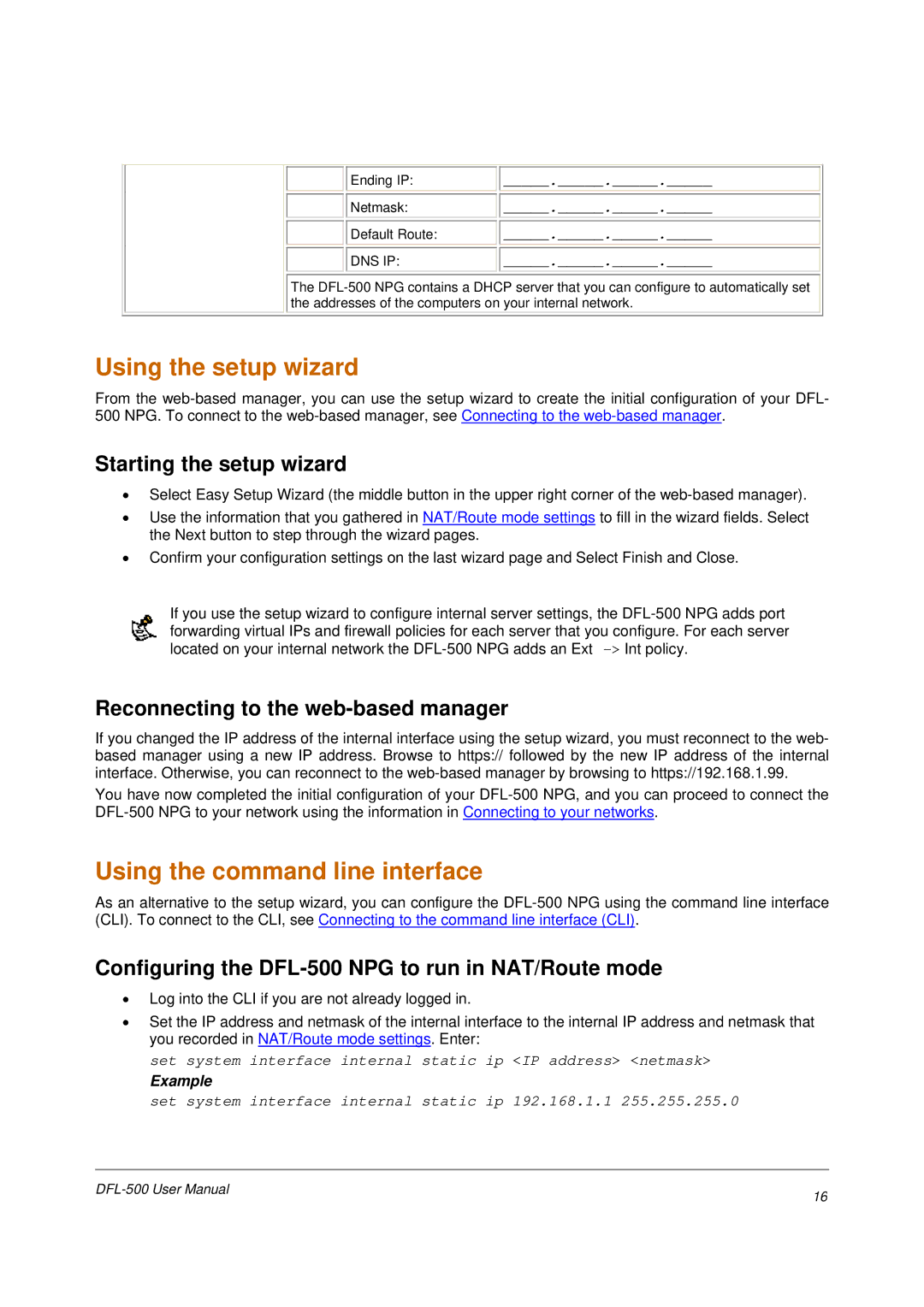
Ending IP: |
| _____._____._____._____ |
|
| |
Netmask: |
| _____._____._____._____ |
|
| |
Default Route: |
| _____._____._____._____ |
|
| |
DNS IP: |
| _____._____._____._____ |
The
Using the setup wizard
From the
Starting the setup wizard
•Select Easy Setup Wizard (the middle button in the upper right corner of the
•Use the information that you gathered in NAT/Route mode settings to fill in the wizard fields. Select the Next button to step through the wizard pages.
•Confirm your configuration settings on the last wizard page and Select Finish and Close.
If you use the setup wizard to configure internal server settings, the
Reconnecting to the web-based manager
If you changed the IP address of the internal interface using the setup wizard, you must reconnect to the web- based manager using a new IP address. Browse to https:// followed by the new IP address of the internal interface. Otherwise, you can reconnect to the
You have now completed the initial configuration of your
Using the command line interface
As an alternative to the setup wizard, you can configure the
Configuring the DFL-500 NPG to run in NAT/Route mode
•Log into the CLI if you are not already logged in.
•Set the IP address and netmask of the internal interface to the internal IP address and netmask that you recorded in NAT/Route mode settings. Enter:
set system interface internal static ip <IP address> <netmask>
Example
set system interface internal static ip 192.168.1.1 255.255.255.0
16 | |
|
